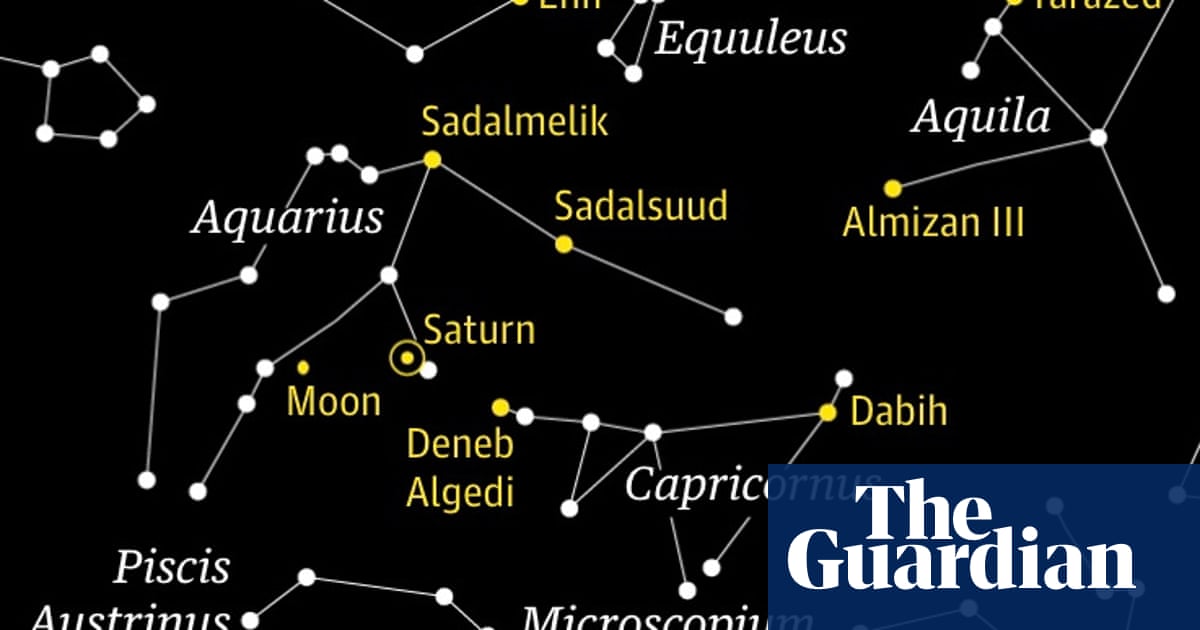Starwatch: the moon’s conjunction with Saturn and Jupiter
This week the moon will be close to the ochre spot of distant Saturn and then the brighter white spot of Jupiter The moon will change from its first quarter phase into a full moon on 24 October, with its conjunction with two of the solar system’s gas giant planets. This will be seen from London at 9pm BST. Despite being similar in size to Saturn, Jupiter appears much brighter than Saturn as Jupiter is only about half its distance and so reflects more intense light. The two conjunctions will be visible from Cape Town, South Africa, and Sydney, Australia.

Publicados : 2 anos atrás por Stuart Clark no Science
This week we follow the moon as it cruises across the night sky, changing from its first quarter phase into a full moon. En route, it will encounter two of the solar system’s gas giant planets.
The chart shows the view looking south from London at 9pm BST on 24 October. The waxing gibbous moon will be close to the ochre spot of distant Saturn, shining its yellow light in the otherwise undistinguished star field of Aquarius, the water bearer.
On this night, 79% of the moon’s visible surface will be illuminated by the sun. Four days later, the moon will be full. It will rise earlier in the evening and appear higher in the sky at 9pm BST. This will bring it into conjunction with the brighter white spot of Jupiter.
Despite being broadly similar in size, Jupiter appears much brighter than Saturn because Jupiter is only about half its distance, and so reflects more intense light. Both pairings are easily visible from the southern hemisphere.
From Cape Town, South Africa, and Sydney, Australia, the two conjunctions will be firmly in the northern sky by late evening, and are easily visible for most of the night.
